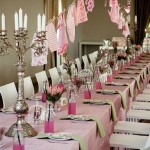Hindu Prayer Room Decoration Ideas
Creating a dedicated prayer room, or mandir, is a cherished practice in Hinduism. It provides a sacred space for personal devotion, meditation, and connection with the divine. Decorating this room thoughtfully and respectfully is essential, reflecting the reverence and peace it embodies. This article explores various ideas for decorating a Hindu prayer room, encompassing elements of traditional aesthetics, spiritual symbolism, and personal preferences.
Essential Elements for a Hindu Prayer Room
A Hindu prayer room should include certain essential elements that foster a sense of reverence and spirituality. These include:
- A Shrine: The central focal point of the prayer room, the shrine houses idols or images of deities, representing the divine presence. It should be placed at a suitable height, ideally facing east.
- A Prayer Mat or Rug: A soft, clean mat or rug is placed in front of the shrine for kneeling or sitting during prayers. It signifies purity and serves as a reminder of the sacredness of the space.
- Diya (Oil Lamp): A diya, a small oil lamp, is often lit during prayers, symbolizing the illumination of the spirit and warding off negativity. The flame is considered sacred and is offered to the divine.
- Incense or Agarbatti: The fragrant aroma of incense creates a calming and devotional atmosphere. It is believed to purify the space and enhance the spiritual experience.
- Flowers: Fresh flowers are offered to the deities as a symbol of beauty and devotion. They are believed to add joy and freshness to the prayer room.
Decorating with Traditional Aesthetics
Hinduism has a rich and diverse artistic tradition, offering inspiration for decorating a prayer room. Here are some ideas that embrace traditional aesthetics:
- Wall Art: Artwork depicting Hindu deities, mythological scenes, or religious symbols can enhance the devotional ambiance. Murals, paintings, or framed prints with intricate designs and vibrant colors add visual interest and inspire contemplation.
- Carvings and Sculptures: Traditional wooden or stone carvings, often featuring deities, mythical creatures, or floral motifs, can add a touch of elegance and cultural depth to the space. They are not merely decorative elements but hold symbolic significance.
- Fabric and Textiles: Using traditional fabrics like silk, brocade, or velvet for drapes, curtains, or coverings for the shrine adds a rich and luxurious feel. Bright colors, intricate patterns, and traditional embroidery enhance the visual appeal and contribute to a sense of ceremony.
- Lighting: Warm, soft lighting creates a calming and meditative atmosphere. Consider using lamps with decorative shades or hanging lanterns to add a touch of traditional charm. Natural light, when available, should be used to illuminate the shrine during the day.
Incorporating Personal Touches
While traditional elements are significant, personalizing the prayer room with meaningful objects and decorations strengthens the connection to the space. Consider incorporating:
- Family Heirlooms: Items passed down through generations, such as antique prayer beads, books on spirituality, or religious artifacts, add historical significance and a sense of continuity to the space.
- Mementos and Symbolic Objects: Objects that hold personal meaning or represent spiritual values can be displayed in the prayer room. These might include crystals, prayer flags, or items from pilgrimages.
- Nature Elements: Bringing elements of nature into the prayer room can create a sense of peace and harmony. This can include potted plants, dried flowers, or a small water fountain.
- Inspirational Quotes: Framing inspirational quotes or verses from scriptures can serve as reminders of spiritual wisdom and offer guidance during prayer and meditation.
Creating a harmonious and inviting prayer room requires careful consideration of various factors:
- Cleanliness and Order: Ensuring the prayer room is consistently clean and clutter-free promotes a sense of peace and tranquility. Regular dusting and maintaining order enhance the space's sacredness.
- Color Palette: Choosing colors that evoke calmness and serenity is essential. Soft hues like pastels, white, or earthy tones are generally preferred. The colors should complement the shrine and other decorations.
- Comfort and Functionality: The prayer room should provide a comfortable space for prayer, meditation, and reflection. Ensure adequate seating, proper lighting, and sufficient ventilation.
- Personalization: The prayer room should reflect the individual's beliefs and practices. Flexibility and adaptation to personal preferences create a truly meaningful space. It should inspire a sense of connection and spiritual growth.

Traditional Pooja Room Designs For Your Home Designcafe

4 Classic Easily Available Materials For Pooja Room

35 Serene Puja Room Designs

35 Serene Puja Room Designs

15 Stunning Home Temple Design Ideas Mandir Decoration

Modern Pooja Room Designs For Your Home

Puja Design Ideas Tips S By Renomania Com Pooja Room Rooms Bedroom Decor
.jpg?strip=all)
Elegant Pooja Room Designs For N Homes

Imposing Design Premdas Krishna Homify Pooja Rooms Room Door

Best Colour For Pooja Room As Per Vastu Designcafe
Related Posts







